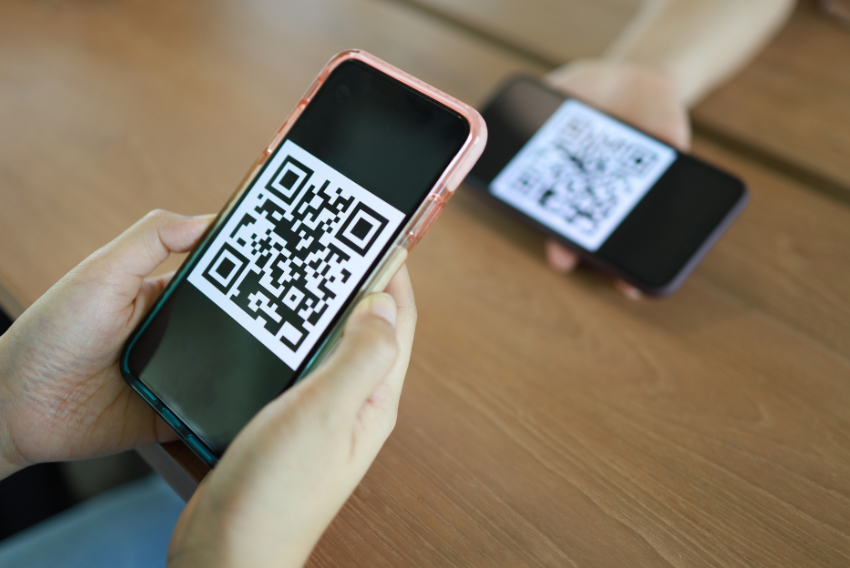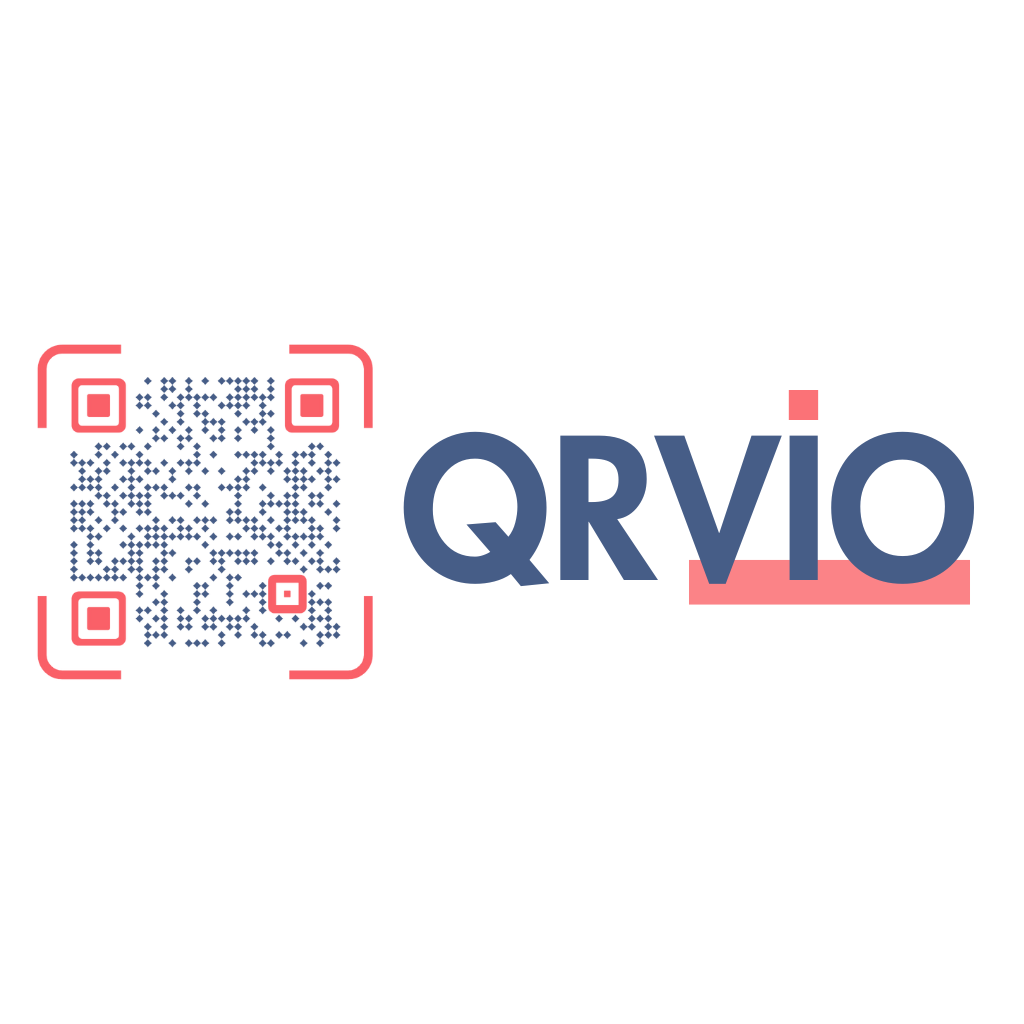Dynamic QR Code Generator: Smart & Trackable Made Simple

1. Introduction
Dynamic QR codes are rapidly transforming how businesses connect with customers. Whether you’re directing users to a landing page, collecting feedback, or running a multi-channel campaign, using a dynamic QR code generator provides flexibility, analytics, and real-time editing—without reprinting your materials. Unlike static QR codes, dynamic ones are editable and trackable, making them a superior solution for marketing, logistics, customer service, and more.
As QR technology continues to grow, understanding how to leverage dynamic QR codes can give your brand a competitive edge in both online and offline channels.
2. What Is a Dynamic QR Code?
2.1 Definition and Key Difference from Static Codes
A dynamic QR code is a type of QR code that redirects to a short URL hosted on a server. This redirection capability allows the target URL or content to be changed anytime—even after the code is printed or distributed. In contrast, static QR codes encode the final destination directly, and once created, their content cannot be altered.
2.2 Core Features
-
Editable Destination URL: Update the link or action at any time.
-
Scan Tracking and Analytics: View scan data such as time, location, device, and total scan count.
-
Shorter Code Structure: Dynamic QR codes often appear cleaner and are easier to scan.
-
Password Protection or Expiry Dates: Limit access for temporary campaigns.
-
Integration Capabilities: Connect with CRM, Google Analytics, or marketing platforms.
These features make dynamic QR codes ideal for businesses that need flexibility, track performance, and iterate campaigns without reprinting materials.
3. Why Use a Dynamic QR Code Generator?
3.1 Enhanced Campaign Control
A dynamic QR code generator enables real-time control over your QR-linked content. Need to change a link due to a new product page, typo, or seasonal promotion? With dynamic codes, it’s just a few clicks—no need to update your printed flyers, packaging, or posters.
3.2 Trackable Marketing Performance
Every scan of a dynamic QR code is logged. With built-in or integrated analytics dashboards, marketers can assess:
-
Which locations generate the most scans
-
What time of day engagement is highest
-
Which devices or operating systems users are on
This data is essential for refining campaigns and making data-backed decisions.
3.3 Cost-Efficient and Scalable
Imagine printing 10,000 brochures. If you use static QR codes and the destination link changes, the brochures are worthless. But with dynamic QR codes, you can simply change the URL and keep your print assets.
This flexibility makes dynamic QR code generators ideal for:
-
Product packaging
-
Event materials
-
Menus
-
Billboards
-
Digital business cards
3.4 Integration with Business Tools
Most modern dynamic QR code generator platforms allow API access, CRM integration, and export options. This makes them a great fit for marketing automation, A/B testing, and funnel optimization.
4. Common Use Cases for Dynamic QR Codes
4.1 Marketing and Advertising
Businesses use dynamic QR codes on posters, mailers, and digital ads to direct consumers to promotions, landing pages, or product details. Later, if the promotion ends or the product link changes, they simply update the URL.
4.2 Event Management
Events, conferences, and trade shows benefit enormously from QR codes. A single dynamic QR code on badges or banners can link to real-time schedules, speaker bios, venue maps, or feedback forms—updated even during the event.
4.3 Menus and Restaurant Applications
For restaurants, dynamic QR codes on tables link to menus, booking pages, or review requests. Updates can include daily specials, new items, or operating hours—without reprinting anything.
4.4 Product Packaging and Labeling
Brands use dynamic QR codes on packaging to offer loyalty rewards, display user manuals, or showcase sustainability initiatives. These codes can adapt based on market, language, or promotional timing.
4.5 Customer Feedback and Surveys
Place a dynamic QR code at checkout or on receipts. Based on user behavior or region, you can serve different feedback forms or customer support flows.
5. Key Features to Look for in a Dynamic QR Code Generator
Not all QR generators are created equal. When choosing a dynamic QR code generator, consider these essential features:
5.1 Real-Time Editing Capabilities
A must-have for campaigns that evolve. Choose a platform that allows you to change the destination URL and content without generating a new QR code.
5.2 Detailed Analytics Dashboard
Look for tools that offer in-depth data visualization, including:
-
Total scans
-
Unique scans
-
Location heatmaps
-
Device/browser segmentation
-
Time-based trends
This data enables optimization across time, audience, and geography.
5.3 Custom Design Options
A good generator allows customization of:
-
QR code colors and gradients
-
Logos and brand icons inside the code
-
Eye shape, frame, and pixel styles
-
Call-to-action labels under the code
Custom designs help increase engagement and reinforce brand identity.
5.4 Export Options and File Formats
Choose a platform that allows downloading QR codes in PNG, SVG, or PDF format to support print and digital use. High resolution is essential for clarity on larger surfaces.
5.5 URL Shortening and Redirection Control
The best tools provide custom short links and control over redirection, which helps with branding (e.g., qr.yourbrand.com/summerpromo) and improves trust when scanning.
6. SEO Benefits of Using Dynamic QR Codes
6.1 Boost Time-on-Site and Reduce Bounce Rates
Dynamic QR codes direct users to relevant and updated content. This increases the likelihood that visitors will engage with your website, reducing bounce rates and improving overall SEO performance.
6.2 Enable A/B Testing for Landing Pages
Marketers can split test different landing pages and change destinations dynamically. Based on user interaction, you can optimize conversions—something not possible with static QR codes.
6.3 Link Rot Prevention
A major SEO concern is broken links. If a page is removed or updated, dynamic QR code destinations can be changed—avoiding dead ends and maintaining a seamless user experience.
7. Best Dynamic QR Code Generator Tools in 2025
Choosing the right dynamic QR code generator can make a significant difference in performance, analytics, and branding. Below are top-tier tools to consider based on key capabilities.
7.1 QR Vio
QR Vio is a feature-rich solution tailored for businesses needing extensive customization and tracking. It supports over 30 types of QR codes, real-time editing, advanced analytics, and bulk creation. With dynamic capabilities including short URL redirection, password protection, scan limits, and expiration dates, it’s built for performance and scalability.
Notable features:
-
21 supported languages
-
1400+ Google Fonts
-
QR code shapes, frames, and stickers
-
Custom domains (e.g., qr.yourbrand.com)
-
Menu and vCard generation
-
Export to SVG, PNG
7.2 QRCode Monkey
Known for its simplicity, QRCode Monkey offers free and paid versions that include dynamic features like URL editing and scan tracking. It also supports logo insertion and basic color customization.
7.3 QRCodeChimp
QRCodeChimp is ideal for businesses that need organized campaign management. It offers dynamic QR generation with folders, bulk upload, user access management, and analytics dashboards.
7.4 Flowcode
Flowcode focuses on high-resolution design and is popular with media brands and influencers. It features dynamic redirecting and robust scan data but has limited design freedom compared to others.
7.5 QR Tiger
With a strong focus on marketing analytics, QR Tiger allows dynamic code generation, multiple code types, and CRM integrations. It’s particularly useful for retail and event campaigns.
8. Tips for Designing Effective Dynamic QR Codes
Even the smartest technology fails without proper execution. Use these design and placement tips to ensure your dynamic QR code generator delivers results.
8.1 Keep It Simple and Scannable
Avoid overcomplicating the design. Too much color contrast or small sizing can affect scan performance. Maintain at least 1 cm² quiet space (empty margin) around the QR code.
8.2 Brand It, But Don’t Break It
Logos, colors, and icons are great, but ensure they don’t interfere with code readability. Test on multiple devices and lighting conditions before launch.
8.3 Add a Call-to-Action
Include text below the QR code to encourage scans, such as:
-
“Scan to view today’s menu”
-
“Scan for 10% off”
-
“Leave a review now”
Clear CTAs increase engagement dramatically.
8.4 Test Before You Print
Always test QR codes before distribution. Scan them with both iOS and Android devices to confirm:
-
Fast scanning
-
Correct redirection
-
Compatibility across screen sizes
8.5 Choose the Right Format
For print, use SVG or high-res PNG. For digital campaigns, compressed PNGs work best to maintain load speed.
9. Common Mistakes to Avoid with Dynamic QR Codes
Using a dynamic QR code generator is powerful, but avoid these mistakes to ensure your campaigns are effective and scalable.
9.1 Not Testing on All Devices
Some Android browsers or outdated camera apps may not handle redirects smoothly. Test on multiple devices and platforms.
9.2 Ignoring Scan Data
You’re missing half the value of dynamic QR codes if you don’t review analytics. Use the data to tweak your campaigns or content links.
9.3 Using Free Generators Without SSL
Avoid using dynamic QR services that don’t use HTTPS for redirection. Unsecured links can scare users or trigger browser warnings.
9.4 Over-Branding or Over-Styling
Design matters—but excessive styling can hinder scanability. Maintain contrast, resolution, and size.
9.5 Forgetting Expiry Settings
If you’re running a temporary campaign, set an expiry or scan limit. Otherwise, users may land on outdated or broken links.
10. Future Trends in Dynamic QR Code Technology
10.1 Location-Aware Redirection
Future dynamic QR code platforms will offer even more granular control—redirecting users to different destinations based on city, device type, or time of day.
10.2 Personalized QR Experiences
Expect more one-to-one personalization. For example, scanning a dynamic QR code might display custom content depending on whether the user is a first-time or returning visitor.
10.3 Offline QR Behavior Logging
Some platforms are working on tracking QR scans even when the user is temporarily offline. This will expand the use of QR in areas with poor connectivity.
10.4 AI-Driven QR Campaign Optimization
Dynamic QR code platforms are integrating AI to automatically adjust redirect URLs, test performance, and suggest the best-performing design variations based on historical data.
11. Conclusion
Dynamic QR codes are no longer just a modern gimmick—they are a measurable, scalable, and flexible tool for engaging users, tracking behavior, and managing content in real time. From enhancing offline marketing to optimizing digital campaigns, a dynamic QR code generator is essential for any business aiming to grow smarter and faster.
Whether you’re running a restaurant, selling products, hosting events, or building a personal brand, investing in the right tool will unlock analytics, security, and marketing intelligence that static QR codes simply can’t provide.
If you’re looking to launch or upgrade your QR code strategy, consider using a reliable solution like QR Vio to design, edit, and monitor dynamic QR codes with complete control.
